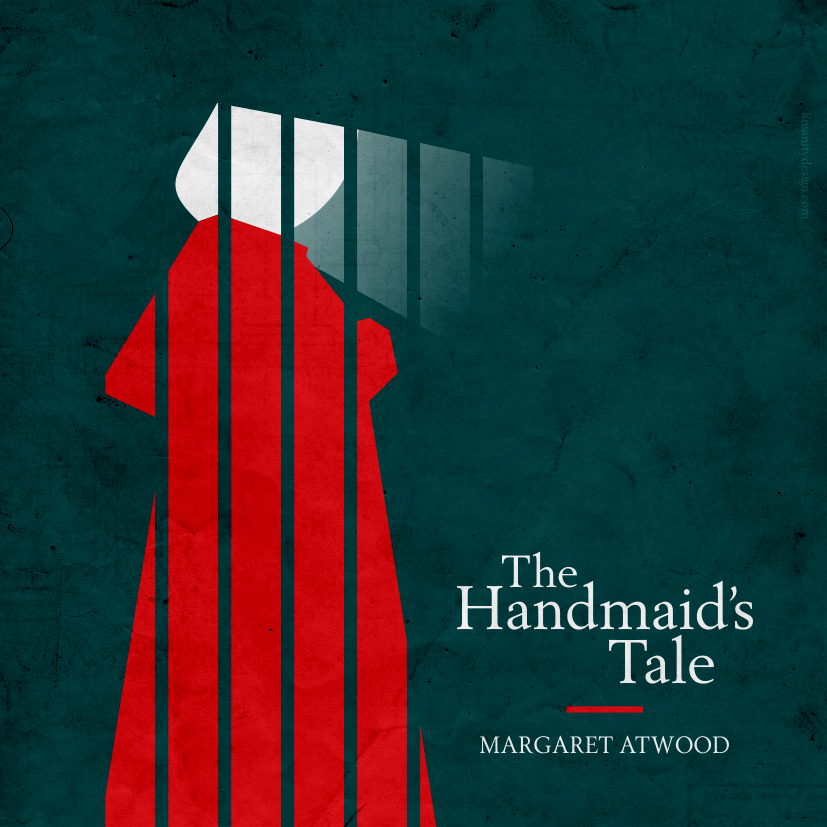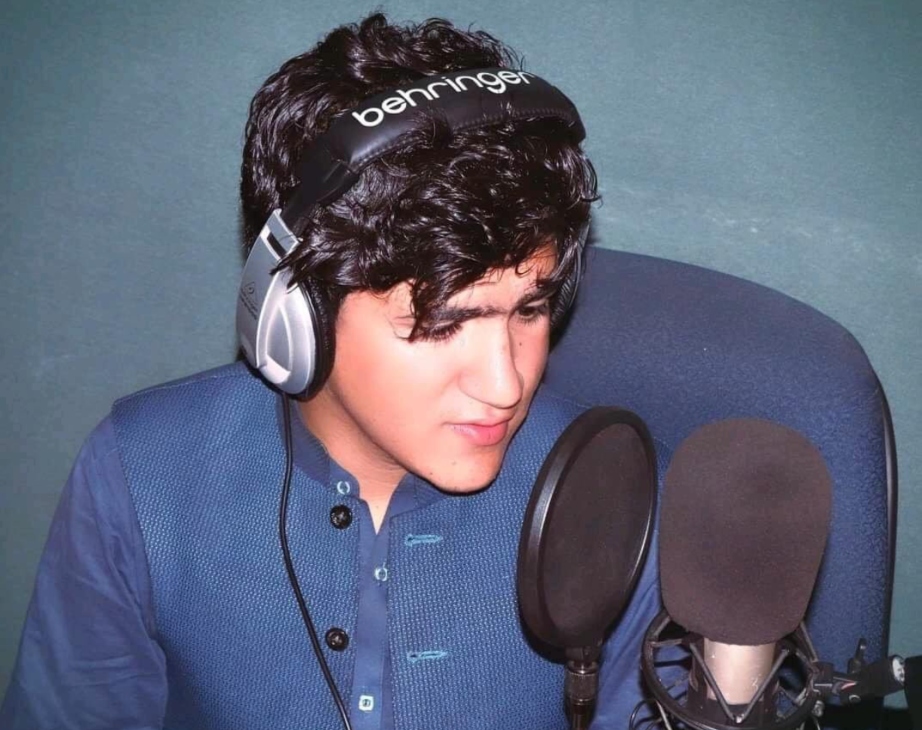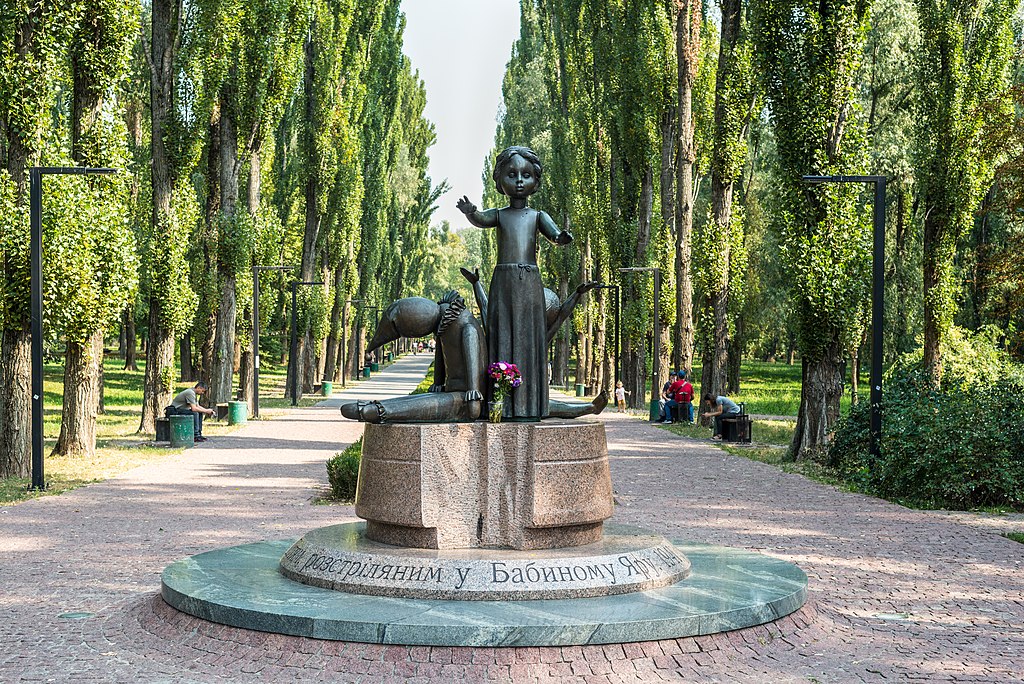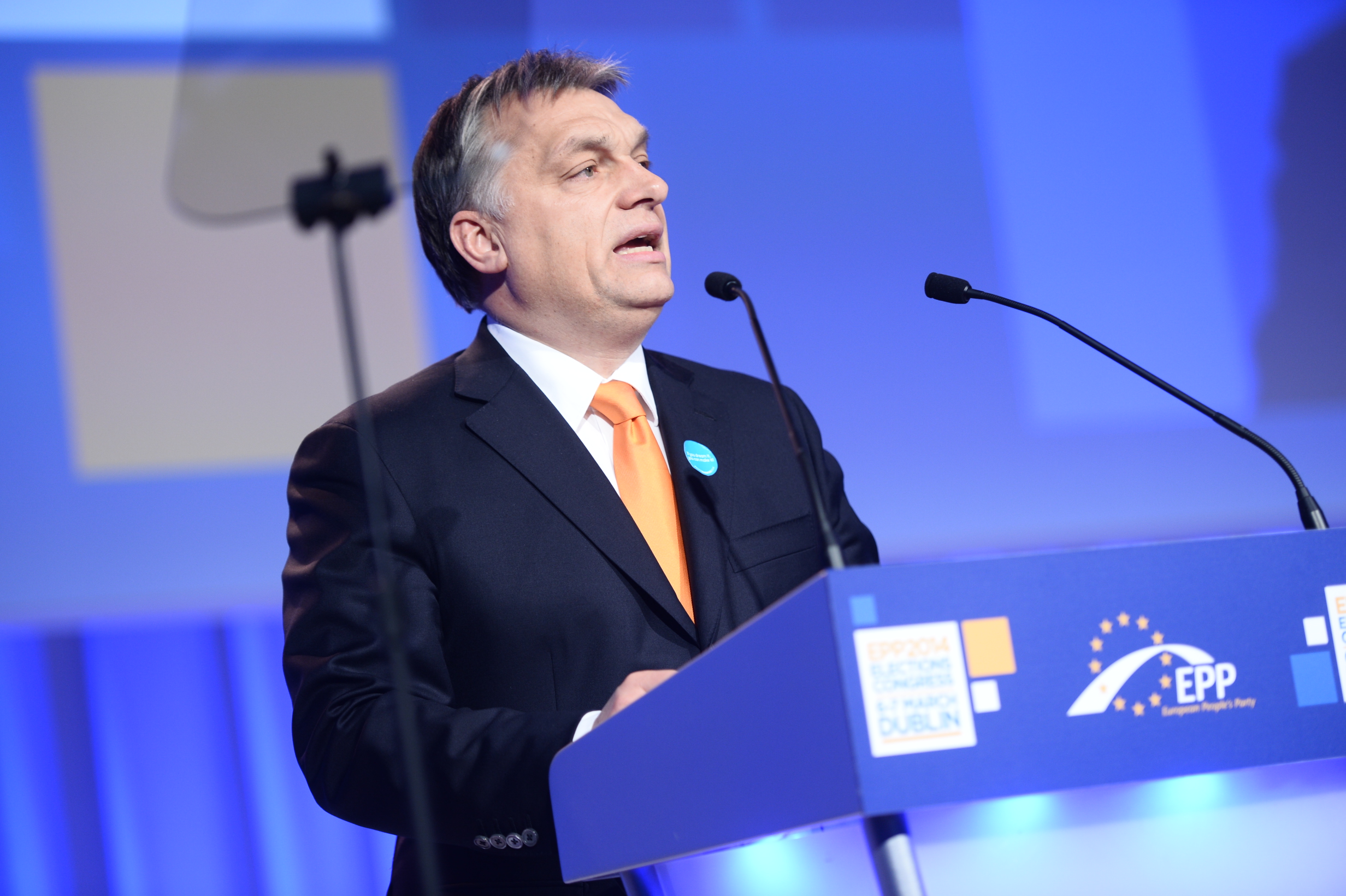On 4 November 2005, more than 3,000 activists of nationalist organisations, making Nazi salutes and with stylised swastikas on their banners, marched through the centre of Moscow to Slavianskaia Square between the Kremlin and the headquarters of the FSB (KGB). If the aims of the marchers had not been clear enough from the line of drummers and young people wearing quasi-military uniform, they were soon evident from their slogans: ‘Sieg Heil!’, ‘Hail Russia’, ‘Russia for the Russians’, ‘Who owns Russia? – Russians!’, ‘Russia is All, All Else is Nothing!’
The organisers of the march had been given official permission for the demonstration. Several radical nationalist and fascist organisations, including the skinheads’ movement, made no secret of the fact that their main aim was to drive all ‘non-Russians’ out of Moscow. Anti-Semitic utterances were also to be heard at the meeting.
On that same day, 4 November, the traditional ‘grey briefing’ took place in the Kremlin for the directors of federal television companies, at which officials of the administration of the President of Russia distributed a ‘list of terminology’. The document advises against ‘distorting’ the Russian language and the employment of ‘correct terminology’ in television news programmes.
The enemy were no longer to be described as separatists, but always as Chechen terrorists or at Chechen fighters; their actions were not to be described as military operations, but as terrorist actions or outrages, and so on. At first sight, these events seem unrelated, but there is one very important detail to note: not one of the nationwide federal television stations screened a report on the march of the nationalists and fascists. In all likelihood, that decision was taken that same day in the Kremlin.
The fourth of November started a new page in the history of Russia: the rebirth of nationalism. This rebirth was initiated by the government, beginning in 2000, after both personnel changes in the Kremlin administration and the revival of the traditions of Soviet propaganda and xenophobia became a component of official and unofficial ideology.
It is manifest in the colourful expressions frequently used by Vladimir Putin, for example: ‘beat the crap out [of the Chechen resistance] in the shithouse’; or about men becoming ‘circumcised radical Muslims’. Xenophobia is endemic both among the leaders of political parties ideologically close to the Russian government and among those that comprise its opposition.
Russian xenophobia has gradually evolved from being anti-Semitic into being anti-Caucasian and anti-Islamic. The development of xenophobia is encouraged, not only by the public speeches and acts of politicians, but also by the mass media: the state-owned media because it is obliged to broadcast the comments of politicians, and the non-state-owned media because it reflects the general nationalistic mood of society.
Only a small proportion of the liberally minded mass media resists the spread of xenophobia. Unfortunately, the influence of a few Moscow newspapers and a few dozen provincial newspapers cannot significantly alter the situation.
Neither can the Internet, despite being completely uncontrolled by the government. The freedom of the Internet has made possible not only the uncontrolled delivery of alternative news, but also the appearance of a large number of nationalistic and fascist websites.
There are several reasons for this reappearance of Russian xenophobia. Researchers usually link Putin’s coming to power with the renewed outbreak of the war in Chechnya: the population wanted to see someone with a firm hand in the Kremlin. This is entirely plausible, because many Russian opinion polls in the late 1990s, the last two or three years of Boris Yeltsin’s rule, pointed to disillusionment after the first war in Chechnya ended in 1996. Many described the peace treaty with the Chechen President Aslan Maskhadov as a ‘shameful defeat’.
The ‘news war’ against Chechnya intensified immediately after the signing of the peace treaty in 1996, and the Russian state-owned mass media increasingly began to refer to ‘Chechen bandits’ and ‘Chechen terrorists’. During this period, however, the independent television company NTV was still functioning, and the Echo of Moscow radio station was developing.
The Internet had become widespread and independent newspapers were being published. It was possible to discuss and debate the problem of Chechnya. The levels of xenophobia in the mass media could be seen as a manifestation of popular nationalism unrelated to government policy. Only radical politicians and the military claimed that the only way they could resolve the Chechen problem was by means of military force.
This situation began to change in August 1999 after the Russian army’s campaign in Dagestan, a federal republic adjacent to Chechnya where Chechen and Dagestani separatists were organising resistance. This was the first military operation conducted under a news blackout. Almost nothing was known about it, because journalists were stopped at the approaches to Dagestan. Only a few journalists working for independent publications managed to report on the operation and its consequences, and their information differed markedly from officially approved news.
Almost as soon as Putin was appointed prime minister in August 1999, he started to woo journalists. Newspaper editors and the directors of television companies began to receive frequent invitations to the Kremlin. After the first few such meetings, a number of heads of independent newspapers began to publish commentaries on their conversations with Putin. When Putin was elected President in March 2000, he continued to socialise with the heads of the mass media, but in recent years only ‘reliable’ journalists, who keep their mouths shut and don’t give away secrets, are invited to the Kremlin.
When two blocks of flats were blown up in Moscow in September 1999, there was no investigative journalism from the Russian media. Within a few hours, all the television channels were broadcasting interviews with politicians who spoke of ‘clear signs of Chechen involvement’, but since then, neither the official enquiry nor any other investigation has come up with evidence to suggest the leadership of the Chechen republic was involved . In spite of this, the television channels did what the government needed them to do: they created a public consensus on who was behind the Moscow atrocities.
The Kremlin’s policy on news was finalised when, in September 2000, Putin signed a strange document titled ‘Doctrine of Information Security’. This is neither a law nor a legally binding document, but is rather a government action programme. The Doctrine refers to the leading role of the state press and makes mention, several times more often than it mentions freedom of speech, of ‘news war’ and the ‘news weapon’.
The provision of news in Russia began to change from 2000 as persecution of the independent television company NTV and of journalists on independent newspapers began; this was accompanied by the creation of new state-owned television companies, newspapers, agencies and websites. Government bureaucrats began routinely to bandy about a new concept, ‘unified news provision’ which, on closer inspection, proves to be none other than the familiar Soviet concept of propaganda.
The main aim has been achieved: Russian society now hears what is going on in Chechnya only from official sources. The government has introduced rigorous controls on Russian journalists, restricting visits to territory where the so-called ‘anti-terrorist operation’ is being conducted, that is, to Chechnya. Similar controls have been applied to foreign journalists.
Journalists who wrote extensively about the First Chechen War have been neutralised by being refused visas and accreditation by the Russian ministry of foreign affairs.
News about events of any description in Russia is now strictly controlled by the government: all the national television companies and radio stations are state-owned. Only a small proportion of news sources, newspapers and the Internet are in a position to deliver alternative news, and their influence on public opinion does not compare with that of radio and TV.
The essential conditions for spreading the language of enmity have been created in Russia. Television is free: it is financed out of the state budget and by advertising revenue. Anybody living in Russia has only to press the button on their remote control to access five national channels, only one of which is dedicated to culture, while the others include news bulletins or news analysis.
There is at present no public service television network in Russia and, to judge by the Duma’s postponement of discussion of the legislative proposal, there is unlikely to be one in the near future. Public control of the programming of television companies would be detrimental to the government, since the Kremlin would lose its principal disseminator of propaganda.
Only subscribers to cable television packages can access non-official news from Euronews, BBC or CNN programmes translated into Russian. In 2002, however, there were only 12 million users of cable networks in Russia out of a population of 145 million. Accordingly, more than 90 per cent of the population is dependent on news from programmes broadcast by state television.
The independent television companies in the Russian provinces have their own news and news analysis programmes, but are subjected to pressure by the local authorities. For the most part, they try to avoid dealing with topics which might cause trouble.
The situation with radio is much the same. The only independent news radio station is Moscow Echo, which is able to rebroadcast its programmes in 41 Russian cities. This gives it a potential audience of 22,400,000, but obviously not all of them listen to the station’s programmes. Probably, as in Moscow, only 8 per cent to 9 per cent tune in. The other independent radio stations (of which there are about 1,000) broadcast music and devote 3-6 minutes in the hour to news. Foreign radio stations broadcasting in Russian – Radio Liberty, the BBC, Deutsche Welle – continue to have a modest following.
The other source of news is, of course newspapers. Traditionally those published in Moscow are considered the most liberal, but their circulations are not large enough to sway public opinion in Russia as a whole.
Of course, several dozen liberal newspapers are published in the provinces, but the standard of living and hence the purchasing power of the population is lower than in Moscow, in consequence, the print run of these newspapers is several times less than those in the capital.
The government is unwilling to give up its control of television since TV news bulletins and news analysis programmes are crucial in forming public opinion. Statistics for February 2004 on the database of the Public Opinion Institute (Fond Obshchestvennoe mnenie), reveal that ORT (the First Channel) is received by 95 per cent of the survey’s respondents, RTR (the Rossiya Channel) by 93 per cent. The figures for the remaining television companies are much lower: NTV 69 per cent; TVTs 48 per cent.
The only area of news provision over which the government has no control is the Internet. As yet there is no law in Russia regulating Internet activity and no statutory obligation to register websites. A large number of nationalist and fascist websites have been created on the Russian Internet (RuNet). Almost every organisation preaching racial or national hatred and intolerance has its own website. RuNet is developing rapidly and is used by 10 per cent to12 per cent of the population, but only a small number of users appear interested in political information.
Russian legislation makes it an offence to publish materials instigating or aggravating national and religious discord. Russia also has a Public Prosecutor’s Office whose job it is to monitor the observance of laws and punish those who flout them. Despite this, hundreds of newspapers daily publish articles whose xenophobic content falls within the provisions of these articles of the Criminal Code: it is extremely rare for cases to be brought on these grounds. The courts deal leniently with those accused of distributing jingoistic publications.
Xenophobic materials are to be found not only in nationalistic publications, but primarily in the popular press, in newspapers like Komsomolskaya Pravda and Moskovsky Komsomolets with huge circulations of 2-3 million. It is clear that anti-Chechen xenophobia has been whipped up by the authorities, both military and political, who are eager to ensure that society continues to believe in the necessity of the military campaign in Chechnya.
The state’s bureaucrats did use propaganda during the First Chechen War, but from the beginning of the Second Chechen War all rhyme and reason disappeared from the news they distributed. Official sources appeared totally unconcerned whether the news they were releasing was subsequently discredited, or was seen to be totally ridiculous, even by those without specialist military knowledge.
For example, on 6 October 1999, the ITAR-TASS news agency, quoting one of the leaders of the North Caucasus Military District, announced: ‘The Chechen bandits are themselves mining residential blocks and, when federal aircraft appear in the sky, blow them up. This is being done in order to turn the Chechen population against the actions of the federal authorities in the northern Caucasus. At the same time, military sources state that the civilian population is being increasingly disaffected by the actions of the bandit formations.’
Hatred of Chechens is always encouraged, in particular by the Russian military, whose press centres disseminate absurd ‘news’. For example, after the Kursk submarine disaster in 2002, ITAR-TASS, citing an anonymous FSB officer, reported that Chechens were planning to hijack a submarine. A year earlier, the intelligence services disseminated a story that the blueprint had been discovered in a cave in the mountains of Chechnya of a Boeing similar to one used by terrorists to destroy buildings in New York on 11 September 2001.
Anti-Chechen propaganda is spread not only via news or news analysis programmes. In the last five years, Russian television channels have shown a large number of feature films in which, as in Indian cinema, the heroes, their characteristics and the ending are already familiar to the audience. These are films about the Chechen war, in which the good guys are invariably Russian soldiers and officers and the bad guys are Chechens or, more generally, Caucasians.
State control of the mass media is the principal cause of the growth of xenophobia in Russia, with television the main ‘weapon’ in the armoury of Russian state propaganda.
Oleg Panfilov is the director of the Center for Journalism in Extreme Situations in Moscow. This article was first published by Index on Censorship in Words & Deeds: Incitement, Hate Speech & the Right to Free Expression in December 2005. Translated by Arch Tait.




